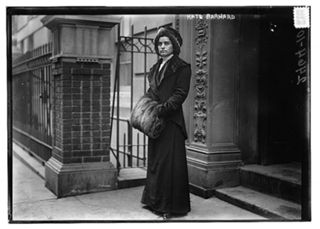From collection Candidates

Kate Barnard helped draft the Oklahoma Constitution, ensuring provisions requiring school attendance, state support for widows, bans on child labor, laws on working conditions, and protections for union members. She also ensured that the constitution create a Department of Charities and Correction. The Constitution was ratified in 1907, and in that year, Barnard was elected to be the first Commissioner of Charities and Correction with a large majority of the votes. She served two 4-year terms, and was the first woman in Oklahoma to serve as a state official. In her second campaign, in a highly contested election, she defeated Republican candidate Kate H. Biggers and Socialist Winnie E. Branstetter. While in office, she advocated for "economic prison reform," which would put psychopathic hospitals in prisons to treat inmates, put prisoners to work at the same pay rate that they would receive if not in prison, and establish education systems in prisons. She attempted to set up work sites for newly released prisoners, and helped start a farm that would put released prisoners to work and provide milk for Oklahoma City, which had a shortage of milk. She visited a Kansas prison, which held over 300 Oklahoma prisoners, and expressed dissatisfaction with the conditions there. Kansas terminated the contract rather than reform the prison, and the prisoners returned to Oklahoma, where conditions were different. She advocated for the land rights of Native Americans, attempting to defeat 13 separate bills that would take Native American land. Notably, Barnard did not take a stance on suffrage, which differentiated her from her Socialist opponent in the election. Barnard was born in Nebraska but moved to Oklahoma at a young age after her mother's death. She lived and worked on her family's farm in Southern Oklahoma for several years, and then moved to Oklahoma City, where her father was a postal worker and Barnard became a teacher and later a stenographer. She began investigating factory conditions in the late 1890s, and in 1904, she went to the World's Fair in St. Louis, where she met Jane Addams and other social reformers and learned more about the conditions of immigrants and poor people in urban centers. At around this time, she also researched conditions in Chicago. Soon after her return to Oklahoma, she became involved in drafting the State Constitution.





